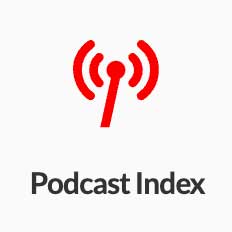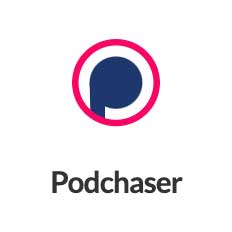The world of work has undergone a dramatic transformation over the past few years, leading to many new terms that attempt to describe the various phenomena reshaping our professional lives.
From “The Great Resignation” to “The New Unemployables,” these terms capture the complexities and challenges of the modern work environment. Understanding these concepts is crucial for career changers to navigate this evolving landscape effectively. Let’s delve into these terms, their definitions, and the statistics behind them.
The Great Resignation
 Definition: The Great Resignation refers to the widespread trend of employees voluntarily leaving their jobs in large numbers, starting in early 2021. Various factors, including burnout, the desire for a better work-life balance, and a reevaluation of personal priorities during the COVID-19 pandemic drove this mass exodus from the workforce.
Definition: The Great Resignation refers to the widespread trend of employees voluntarily leaving their jobs in large numbers, starting in early 2021. Various factors, including burnout, the desire for a better work-life balance, and a reevaluation of personal priorities during the COVID-19 pandemic drove this mass exodus from the workforce.
Statistics: According to the U.S. Bureau of Labor Statistics, in 2021 alone, over 47 million Americans voluntarily quit their jobs, a record high. This trend has continued into 2022 and 2023, with millions more joining the ranks of the resigned each month.
White Collar Recession
Definition: The White-Collar Recession refers to the significant layoffs and job losses in professional, managerial, and administrative sectors. Unlike traditional recessions, which often hit blue-collar jobs harder, this phenomenon primarily impacts white-collar workers.
Statistics: Challenger, Gray & Christmas, Inc. data showed that job cuts in the tech sector alone increased by 649% in the first half of 2023 compared to the same period in 2022. This trend reflects broader cuts in white-collar industries such as finance, healthcare, and information technology.
Stucknation
Definition: Stucknation describes the stagnation experienced by many workers who feel trapped in their current roles without prospects for advancement or change. This term highlights the frustrations of employees who cannot move forward in their careers despite a strong desire to do so.
Statistics: A survey by the Pew Research Center found that 63% of U.S. workers feel stuck in their jobs, with limited opportunities for promotion or skill development. This sentiment is particularly prevalent among younger workers and those in mid-level positions.
The Great Unbossing
Definition: The Great Unbossing refers to the movement towards less hierarchical and more decentralized organizational structures. In this environment, traditional managerial roles are de-emphasized to empower employees to take greater ownership of their work and collaborate more freely.
Statistics: A study by Deloitte found that 42% of companies are actively shifting towards flatter organizational structures, with many reporting increased employee satisfaction and productivity as a result. This shift is a broader trend towards more agile and adaptive business practices.
The Shadow Stand-ins
Definition: Shadow Stand-ins are employees who unofficially take on additional roles and responsibilities without formal recognition or compensation. This often occurs when staffing shortages and high turnover rates leave gaps that must be filled.
Statistics: Research by Gartner indicates that 25% of employees perform significant work outside their official job descriptions. These shadow roles can lead to burnout and dissatisfaction, as workers feel overburdened and underappreciated.
The New Unemployable
Definition: The New Unemployables find it increasingly difficult to secure employment despite having relevant skills and experience. This term often refers to older workers, those with outdated skills, or individuals whose industries have been severely disrupted by technological advancements.
Statistics: According to the AARP, workers over 50 are 20% less likely to find re-employment after losing their jobs than younger workers. Additionally, the World Economic Forum reports that 40% of job skills are expected to change in the next five years, creating challenges for those who cannot quickly adapt.
Career Plateau
Definition: A Career Plateau is the point at which an individual feels they have reached the highest level of achievement in their current job or career path, with no further opportunities for growth or advancement. This can lead to frustration, lack of motivation, and disengagement.
Statistics: A Gallup poll found that 52% of employees feel “just showing up” at work, with no real engagement or investment in their roles. This is often a result of hitting a career plateau, where employees see no clear path forward for their professional development.
 Navigating the New Work Environment
Navigating the New Work Environment
The changing work environment, characterized by these diverse and complex phenomena, presents challenges and opportunities. Employees and employers must understand and adapt to these trends to thrive in this new landscape. One effective way to navigate these changes is through Career Ownership Coaching®.
The Role of a Career Ownership Coach®
A Career Ownership Coach can help individuals:
- Identify Strengths and Opportunities: By assessing their skills, experiences, and career goals, individuals can uncover new opportunities and pathways that align with their aspirations.
- Develop a Strategic Plan: Coaches assist in creating actionable plans to achieve career objectives, whether that means changing industries or seeking new roles.
- Enhance Career Change Strategies: Coaches offer a network of opportunities you may not know and can align with your transferable skills, ensuring you find clarity in your path—all at no cost.
- Foster Work-Life Balance: Coaches help clients find ways to achieve a healthier work-life balance, reducing burnout and enhancing overall well-being.
Conclusion
The modern work environment is undoubtedly complex and ever-evolving. Terms like The Great Resignation, White Collar Recession, and Career Plateau highlight the challenges faced by today’s workforce. Understanding these terms and the statistics behind them is the first step in navigating this new landscape.
Working with a Career Ownership Coach® can provide the guidance and support needed to take control of one’s professional future. By leveraging a coach’s expertise, individuals can turn challenges into opportunities and build fulfilling, successful careers. If you’re ready to navigate the complexities of the modern work environment and take charge of your career, consider partnering with a Career Ownership Coach® today. Together, you can chart a course toward a brighter, more rewarding professional future.
 About Your Career Revolution
About Your Career Revolution
Our mission is to help individuals explore self-sufficiency as an alternative career.
We help them define their Income, Lifestyle, Wealth, and Equity goals and provide education on the best ways to achieve them. We don’t sell franchises – we help people achieve their dreams of self-sufficiency through business ownership. The approach is different, the experience is different. And it works.
Order on AMAZON
Learn More About Career Ownership Coaching®
If you are considering a career change, invest in yourself to discover your options, possibilities, and dreams. Chat with one of our coaches to begin your career revolution. To learn more about Career Ownership Coaching®, visit www.entrepreneursource.com or check out our guidebook, “Your Career Revolution: Reimagine and Reclaim the Life of Your Dreams.”

















